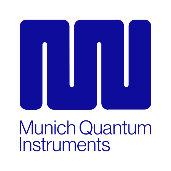-
StatusOngoing
-
Status date2024-07-04
-
Activity CodeAB.XYZ
The project aims to design and manufacture a large area four quadrant (4QD) superconducting nanowire single-photon detector (SNSPD) for ground-based communication systems to support the development of DSOC and QKD demonstrator satellites. One main goal is to facilitate reliable links from the lunar gateway to earth and to enable photon-starved optical communications applications, utilizing SNSPD technology to improve performance over existing solutions. The large area 4QD SNSPD detector will leverage the benefits of SNSPD technology, which are considered the best sensor technology available on the market today for efficient and secure optical communication applications. SNSPDs have the potential to offer high efficiency, high count rate, low dark count, and low jitter simultaneously. This will provide the necessary performance for the demanding requirements of DSOC and QKD communication links. The links leveraging near-infrared wavelengths offer a promising solution for secure communication over long distances, thanks to the availability of high-power, high-efficiency laser technology and favourable atmospheric transmission conditions. The successful implementation of the activity is a significant milestone towards the realization of a more robust and efficient DSOC and QKD communication system utilizing.
European technology.
Key challenges of the project are as follows:
-
limited size of the detector, which affects its overall performance for effective free space coupling.
-
limited bandwidth of sensors, which can limit the data transfer rate.
-
extremely low jitter
-
short dead time of sensors
-
ability to track the target satellite accurately and maintain the fine alignment during communication.
-
a compact telescope mounted closed-loop cryostat SNSPD sensor system
The goal of the described solution is to overcome the identified barriers preventing the widespread use of SNSPD-type sensors in quantum and telecommunications applications.
The main advantages of the solution are:
-
Very high Quantum Efficiency for C-Band providing the best possible detection quality
-
Very low Dark Count Rate providing low thermal noise and thus noise floor of the sensor providing the possibility to have true single photon detection
-
Very low jitter od the output signal, which translates into detection rate and overall quality and performance of communication
-
Large active sensor size enabling easier usage and better performance for longer laser links
-
Additional analog tracking outputs for easy laser beam positioning and telescope movement automatic control
-
Low noise cryogenic amplifier-based readout electronics combined with state-of-the-art room temperature signal processing hardware for best possible performance
-
Auxiliary hardware providing PPM encoding for universal modem equipment compatibility
-
Optimized for use with telescopes in the form of free space coupling
-
Modularity that allows for future improvement, both in terms of the cryostat used - the operating environment of the sensor and low-noise electronics - and in terms of the sensors, electronics, and support equipment themselves
The described product is a development of current technologies to achieve exceptional performance in both detection and processing of C-band optical signals. The innovation is the development of a multi-pixel sensor along with the necessary electronics and mechanics that allow:
-
Single photon readout allowing a data rate of 1 Gbps with free space coupling with very low jitter, low noise, and dark count rate
-
Mounting on the astronomical telescope in a way that does not interfere with both the detector and the telescope itself
-
Encoding of the read photon stream into Pulse Position Modulation usable by other telecommunications subsystems
-
Ability to track the position of the beam to automate source tracking by the optical system
-
Ensuring ease of deployment and operations
The main component of the designed system is an optical single photon sensor based on superconducting nanowire technology. This makes it possible to detect single photons in the optical C-band with very high speed and low noise. This sensor requires a temperature of less than 3 degrees Kelvin for operation, so a cryostat is necessary. To ensure that it can be mounted to the telescope, it is necessary to adapt already existing solutions to eliminate vibrations or other undesirable effects that can affect the performance of the readout system. Inside the cryostat, in addition to the sensor, cryogenic signal amplifiers will be placed to allow powering the sensor and reading signals from it. The developed solution allows readout with the lowest possible noise, which makes it possible to keep the sensor's jitter very low even after signal amplification. After amplification, the signal is passed outside the cryostat, where it is finally shaped and encoded into Pulse Position Modulation, which allows such a sensor to be used in long-distance optical communication for data transfer. In addition to these components, the system also provides a full set of necessary support equipment to facilitate both deployment and reliable operation.
Work package 1-2-3 contain technology analysis, compliance statement and preliminary subsystem designs.
MS1 Finalised Technical Specification
MS2 Selected Technical Baseline
MS3 Verified Detailed Design
During work package 4-5-6 the plan is being implemented and verified. Products are reviewed and tested.
MS4 Preliminary Implementation Plan
MS5 Implementation and Verification Plan
MS6 Verified Deliverable Items and Compliance Statement
Technology assessment is covered during the last work package 7.
MS7 Technology Assessment and Development Plan
Milestone 1: Trade-offs and Requirements Consolidation Review has been achieved.
The technical baseline is now being selected and preliminary designs are being created.
Preparations for the first iteration of the demo in progress.




